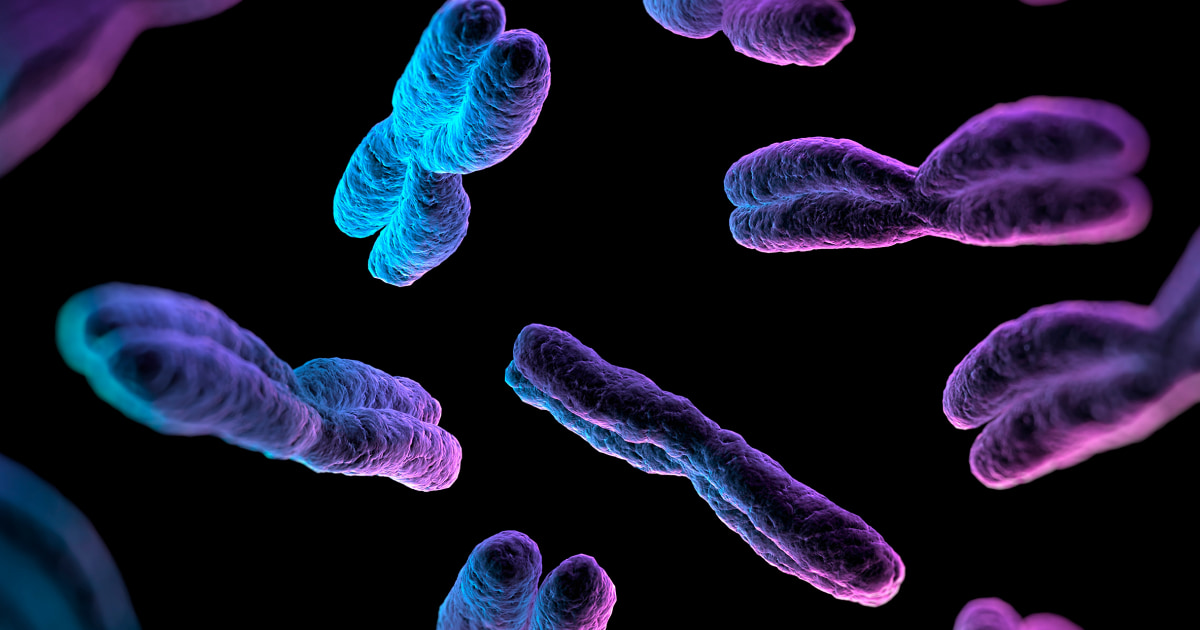Researchers have built a draft of a human pangenome, a collection of DNA that represents the genetic information of 47 individuals. The development, a milestone in genomics, magnifies and broadens scientists’ insight into the code that makes us uniquely human and different from one another.
The new pangenome, described in papers published Wednesday in the scientific journal Nature, could help scientists uncover small genetic differences that contribute to conditions such as heart disease and schizophrenia, among others, researchers said Tuesday at a Press conference.
“We are finding remarkable patterns of genetic variation,” said Evan Eichler, a professor of genome sciences at the University of Washington School of Medicine who participated in the project. «There were hints of this before, but we didn’t really have the right microscope to see it.»
The pangenome dramatically expands the reference of the original human genome, which scientists have been using for roughly two decades. That original reference came largely from one person, which limits its effectiveness.
Because the DNA of 47 people is represented, the new pangenome better reflects the genetic information of people from around the world and from different backgrounds. Scientists say it accounts for much of the genetic diversity among humans, including the most common variations.
«We now understand that having a map of a single human genome cannot adequately represent all of humanity,» said Karen Miga, lead author of the research and associate director of human pangenomics at the Institute for Genomics at the University of California, Santa Cruz. Miga added that the new effort was a more inclusive and «equitable» approach.
The new pangenome could help scientists identify influential genetic differences that have gone undetected due to limitations of the old reference sequence. The researchers behind the project say it has the potential to contribute to personalized precision medicine – the development of healthcare that is tailored to an individual’s genetic makeup.
Such a powerful tool also raises important ethical questions about genetic privacy and what data is included and how. The research group said it is sensitive to those concerns.
More than 100 scientists contributed as authors of research articles describing the work. The scientists, who call themselves the Human Pangenome Reference Consortium, plan to eventually include genetic samples from about 350 people in the reference. The data will be publicly available and shared openly.
To build the pangenome, the scientists used data from the 1000 Genomes Project, which included participants from all ethnic groups. The data is anonymous, which means that some steps have been taken to protect the identities of those whose DNA is on display. The scientists said the 47 people used in this project represent a diverse geographic distribution in different human populations.
Researchers and clinicians often use the human genome reference as a benchmark against which to compare a subject’s DNA and examine it for key differences that could indicate things like the trigger for a genetic disease. It has limitations: The original reference genome introduces bias and its performance isn’t the same across groups of people, the researchers said.
The scientists hope that the pangenome reference will improve performance and make it more inclusive.
«By broadly sampling humanity’s genetic tree, it benefits everyone,» said Ira Hall, a professor who is part of the research group and director of the Yale Center for Genomic Health at Yale University.
The new pangenome takes up about 3 gigabytes of space on a computer. Researchers have developed algorithms that reference, map, and search within the pangenome structure.
In the immediate future, the consortium hopes that the expanded scope of the reference will help scientists better study particular genes.
This research follows another recent milestone in genomics. Last year, scientists announced that they had finally sequenced an entire human genome, including the extremely repetitive and complex pieces of DNA that had left them in the dark for decades.
Both advances were made possible by the advancement of new technology that can take much longer DNA reads, eliminating much of the puzzle work involved in piecing together short snippets of genetic code.
Pangenome research raises concerns about privacy, representation, and who controls genomic information.
Detective scientists examining previous genomics projects found that it was possible to identify the names of the subjects based on published data that was shared publicly after they consented to sharing it with researchers.
Genetic research includes a history of concern about mistreatment, exploitation and lack of participation in indigenous and tribal communities.
Members of the research group said they are committed to respecting tribes and groups that have formal policies against contributing genomic data to their project and «not sidestepping data sovereignty issues,» said Eimear Kenny, director of the research group. icahn institute for genomic health. Mount Sinai School of Medicine, author of the research.

